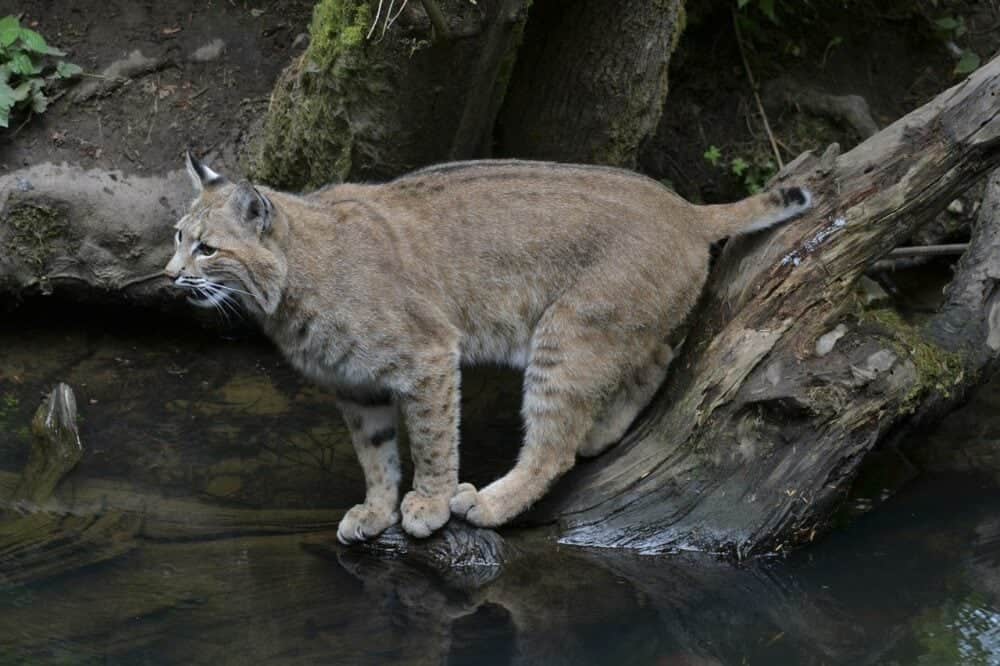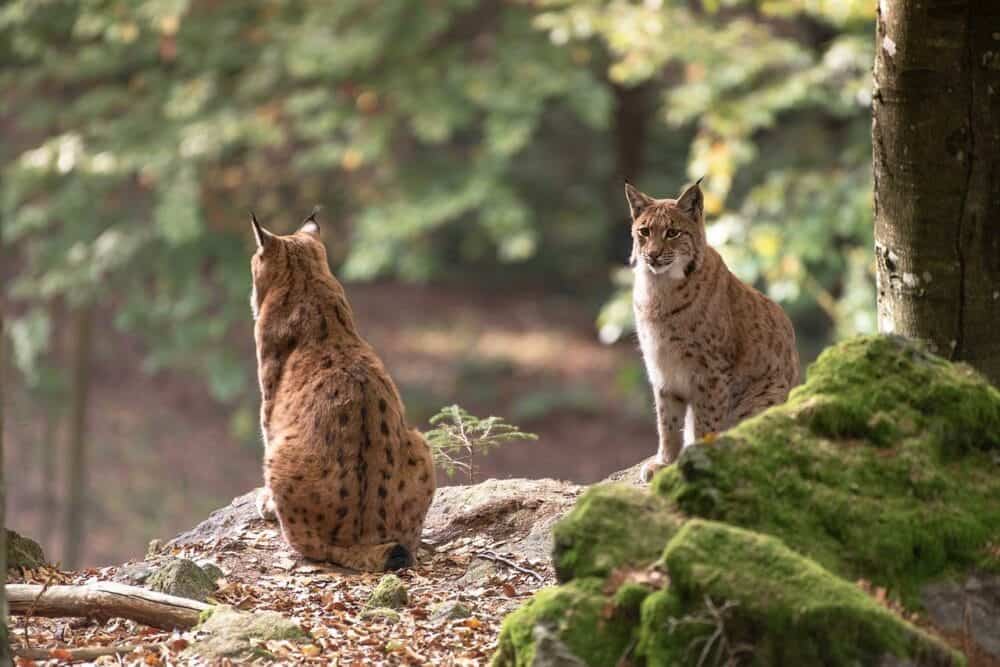There’s a lot of wildlife in Alabama, particularly in the more rural areas. You can find a bit of everything there, including birds, raccoons, wolves, foxes, river otters, bears, and more. But does Alabama have any wild cats?
It turns out they do, but only two native to the area—the bobcat and the cougar. And really, you’ll only find the bobcat hanging around these days (though since wild cats are elusive, you may never get a chance to see one). Read on and learn more about these two wild cats located in Alabama!

The 2 Types of Wild Cats in Alabama
1. Bobcat

| Scientific Name | Lynx rufus |
| Weight | 30–40 lbs |
| Habitats | Canyons, heavily wooded areas, swamps, hardwood forests, partially exposed farmland |
This medium-sized wild cat is the only one currently confirmed to live in Alabama. They live throughout the entire state (which is why their range of habitats is so varied), usually in fairly close proximity to people. Despite this proximity, bobcats avoid coming into contact with humans unless strictly necessary. Most often, they will be spotted around farmland or forests.
The bobcat is sometimes mistaken for a large domestic cat when seen from a distance, but you can tell the difference between them as the bobcat’s tail is bobbed. They can also be identified by their coats which are a brown or tan color, often with a hint of red undertones. Plus, the bobcat has markings that they can be identified by, such as spots and stripes in dark brown or black. And these wild cats have ears with tufted fur, as well as tufted fur on their face that resemble sideburns.
Bobcats are nocturnal hunters that usually hunt smaller prey, such as squirrels and mice (but have been known on occasion to attack larger animals like deer). However, they aren’t considered a threat to humans—unless you approach them while they have their young with them or if provoked. Always remember to admire wild cats such as this one from a distance!
2. Cougar

| Scientific Name | Felis concolor |
| Weight | 75–120 lbs |
| Habitats | Rough terrain, swamps, upland woodlands |
Also known as the catamount, puma, mountain lion, or panther, the cougar is the other wild cat native to Alabama. One of the largest wild cat breeds, the cougar is thought to have once lived throughout the entire state. But though there are often reported cougar sightings, it’s believed that this cat is actually quite scarce or even completely gone from Alabama and that these sightings are instead other large animals. The last confirmed sighting seems to have been in the 1960s when a conservation enforcement officer found a den of cubs.
Cougars can be identified by their size (60–110 inches in length) and by the color of their coats which can be shades of brown, gray, red, or tawny. However, the chin and muzzle will be white. You can also identify this wild cat breed by the fact that the length of their tail comprises roughly one-third of the cat’s total length.
The cougar is a dangerous cat and one to be avoided. Luckily, these cats want nothing to do with humans, so as long as you don’t go near one, you should be fine. Unlike the bobcat, which engages in nocturnal hunting, the cougar will hunt during the day. Also, unlike the bobcat, the cougar goes for larger prey rather than small.

What to Know If You Run Into a Bobcat in Alabama
The chances that you come across a cougar in Alabama are almost non-existent, but there is a slight chance you could stumble across a bobcat. If that happens, follow these tips to ensure you stay safe.
- Don’t panic! Calmness is key in this situation.
- Keep your distance. You don’t want to get close to a bobcat and provoke it, so stay as far away as you’re able.
- Increase the distance between the bobcat and yourself. But do so slowly and while backing away; don’t just run off or make sudden movements, as this could trigger them to pursue you.
- Do make loud noises, though, to try and scare it off. You can yell or, if you have items handy, bang things together to create a commotion.
- If you come across the bobcat on your property, you’ll probably want to contact the local Department of Fish and Wildlife Service or a wildlife removal service to have them removed.

Conclusion
Alabama only has two wild cats—the bobcat and the mountain lion. However, it’s doubtful you’ll come across a cougar in the state these days, as there hasn’t been a confirmed sighting for roughly 60 years. Chances are higher—but still slim—that you’ll meet up with a bobcat. If that occurs, you can come away from your encounter unscathed by following a few simple tips (and remember, the bobcat wants nothing to do with you; it will only attack if it is provoked or has young around). Your best bet, though, is to never approach a wild animal, and if you see a bobcat on or around your property, contact the proper authorities to have it removed!
- You might also like: Ragdoll Kittens For Sale in Alabama: Breeders List
Featured Image Credit: Miller_Eszter, Pixabay
